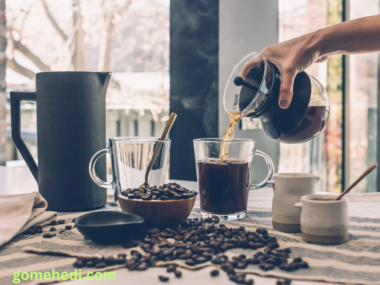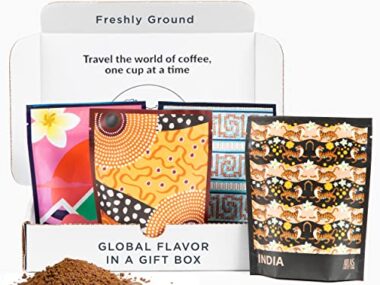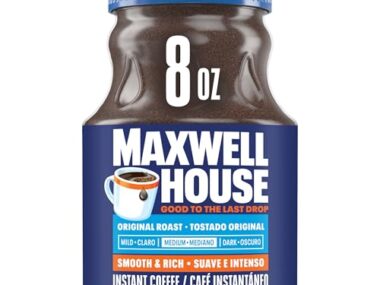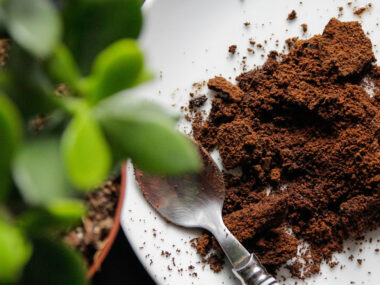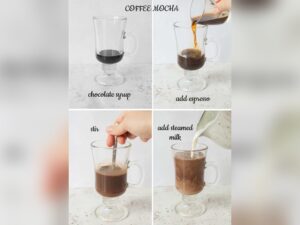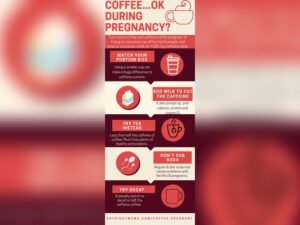Drip coffee is a simple, classic brewing method loved by many. It’s easy to make and delivers rich, flavorful coffee. Learning how to make drip coffee at home ensures you get a fresh, café-quality cup every time.
Making drip coffee at home is both convenient and rewarding. You can control the strength and flavor to suit your taste. This method involves hot water passing through coffee grounds, extracting the oils and flavors, and then dripping into a pot.
With just a few basic tools and steps, you can enjoy a delicious cup of drip coffee every morning. Whether you’re a coffee novice or looking to refine your technique, this guide will help you brew the perfect drip coffee. Get ready to elevate your coffee experience right from your kitchen.
Choosing The Right Beans
Making drip coffee is an art that starts with selecting the right beans. The beans you choose can make a huge difference in the flavor, aroma, and overall enjoyment of your coffee. Let’s dive into how to pick the best beans for your drip coffee.
Types Of Coffee Beans
There are four main types of coffee beans: Arabica, Robusta, Liberica, and Excelsa. Each type has unique characteristics that can influence your coffee’s taste.
- Arabica: These beans are known for their smooth and complex flavor. They often have a sweet, fruity, and acidic profile. Arabica beans are popular worldwide.
- Robusta: These beans have a stronger, more bitter taste. They contain more caffeine than Arabica. Robusta beans are often used in espresso blends.
- Liberica: These beans have a unique flavor, with a woody and smoky taste. They are less common but prized by some for their distinct profile.
- Excelsa: These beans are rare and have a tart, fruity flavor. They are often used to add complexity to coffee blends.
Here is a quick comparison of the main types:
| Bean Type | Flavor Profile | Caffeine Content |
|---|---|---|
| Arabica | Sweet, Fruity, Acidic | Low to Medium |
| Robusta | Bitter, Strong | High |
| Liberica | Woody, Smoky | Medium |
| Excelsa | Tart, Fruity | Medium |
Choosing the right type of bean depends on your taste preferences. If you enjoy a smooth, sweet coffee, Arabica might be your best bet. If you prefer a stronger kick, consider Robusta.
Freshness Matters
The freshness of your coffee beans is crucial for making great drip coffee. Fresh beans have more complex flavors and aromas. Stale beans lose their vibrant qualities over time.
Here are some tips for ensuring your coffee beans stay fresh:
- Buy in small quantities: Only purchase what you can use in one to two weeks. This prevents the beans from going stale.
- Check the roast date: Look for beans with a recent roast date. Beans are at their best within a month of roasting.
- Store properly: Keep beans in an airtight container, away from light, heat, and moisture. A cool, dark place is ideal.
- Grind as needed: Grind your beans just before brewing. Pre-ground coffee loses freshness quickly.
By following these tips, you can ensure your coffee beans remain fresh and flavorful. Fresh beans can make a big difference in the quality of your drip coffee. So, pay attention to the roast date and storage conditions to enjoy the best cup possible.
Essential Equipment
Making drip coffee at home can be a delightful experience. To brew the perfect cup, you need the right equipment. Having the correct tools not only makes the process easier but also enhances the flavor of your coffee. In this guide, we will discuss the essential equipment needed to make drip coffee. We will cover coffee maker options and necessary accessories.
Coffee Maker Options
Choosing the right coffee maker is crucial for making delicious drip coffee. There are several types of coffee makers available, each with its features. Here are some popular options:
- Automatic Drip Coffee Makers: These are the most common and convenient. They come with programmable settings, making it easy to set a timer for your coffee. Some models have built-in grinders.
- Manual Drip Coffee Makers: These require more hands-on effort but offer greater control over the brewing process. Examples include pour-over coffee makers like the Chemex or Hario V60.
- Single-Serve Pod Coffee Makers: These are perfect for those who want a quick cup of coffee. They use pre-packaged pods, making them easy to use and clean.
- Thermal Coffee Makers: These keep your coffee hot for longer periods. They are ideal for those who drink coffee throughout the day.
Below is a comparison table to help you decide which coffee maker suits your needs:
| Type | Pros | Cons |
|---|---|---|
| Automatic Drip | Convenient, programmable, consistent | Limited control, can be expensive |
| Manual Drip | Control over brewing, enhances flavor | Requires effort, time-consuming |
| Single-Serve Pod | Quick, easy to use, minimal cleanup | Expensive pods, limited brew size |
| Thermal | Keeps coffee hot, durable | Bulky, can be costly |
Necessary Accessories
In addition to a coffee maker, several accessories are essential for making the best drip coffee. These tools will help you achieve the perfect brew:
- Coffee Grinder: Freshly ground coffee beans make a huge difference in flavor. A burr grinder is preferred over a blade grinder for consistency.
- Filters: Paper filters are common, but reusable metal filters are also available. Each type affects the coffee taste differently.
- Scale: Measuring coffee and water accurately is key. A digital scale ensures the right coffee-to-water ratio.
- Kettle: A gooseneck kettle provides precise control over water flow, essential for manual drip coffee makers.
- Thermometer: Ideal brewing temperature is between 195°F and 205°F. A thermometer ensures you get it right.
- Storage Container: Keeping coffee beans fresh is important. An airtight container preserves flavor and aroma.
Here’s a checklist of necessary accessories:
- Coffee Grinder
- Filters
- Scale
- Kettle
- Thermometer
- Storage Container
Having these accessories will make your drip coffee experience more enjoyable and consistent. Investing in quality tools ensures a delicious cup every time.
Grinding Coffee
Making drip coffee might seem simple, but several steps can enhance the flavor. One key step is grinding coffee. The grind size and method influence the taste and quality of your brew. Let’s dive into why grind size is important and explore the best grinding techniques.
Grind Size Importance
Grind size is crucial for drip coffee. It affects the extraction rate, impacting the taste. Here’s why:
- Flavor Extraction: The coffee grind size determines how much flavor is extracted. Too fine, and it can become bitter. Too coarse, and it might taste weak.
- Brewing Time: A consistent grind size ensures a balanced brewing time. This consistency helps in avoiding over or under-extraction.
Consider these common grind sizes for different brewing methods:
| Brewing Method | Grind Size |
|---|---|
| Espresso | Fine |
| Drip Coffee | Medium |
| French Press | Coarse |
For drip coffee, a medium grind is best. It resembles granulated sugar. It balances the extraction, giving you a smooth, rich taste. If the grind is too fine, it might clog the filter. If too coarse, the coffee will under-extract.
Best Grinding Techniques
Grinding techniques matter. They ensure you get the right grind size and consistency. Here are some effective techniques:
- Burr Grinder: A burr grinder is the best choice. It offers a uniform grind size. Adjust the settings to get the perfect medium grind for drip coffee.
- Blade Grinder: A blade grinder is less consistent. It can work, but the grind size may vary. Pulse the grinder to get a more even grind.
Here are steps for using a burr grinder:
- Set the grinder to medium.
- Add the coffee beans.
- Grind until you get a texture like granulated sugar.
For a blade grinder:
- Add the beans.
- Pulse for 1-2 seconds at a time.
- Check the grind frequently to avoid over-grinding.
Consistency is key. A burr grinder is ideal. If using a blade grinder, be careful with the grind. This attention ensures you enjoy the best drip coffee experience.
Measuring Ingredients
Measuring the ingredients correctly is essential for making perfect drip coffee. Getting the coffee-to-water ratio right ensures a balanced and flavorful brew. Using a scale can help you measure more accurately, leading to a consistent cup every time. Let’s dive into the details of these crucial steps.
Coffee-to-water Ratio
One of the most important factors in making great drip coffee is the coffee-to-water ratio. This ratio determines the strength and taste of your coffee. The standard ratio is 1:16, which means one part coffee to sixteen parts water.
Here is a simple guide to follow:
- Light Roast: Use a 1:15 ratio for a balanced taste.
- Medium Roast: Stick to the 1:16 ratio for the best flavor.
- Dark Roast: Opt for a 1:17 ratio to avoid over-extraction.
For example, if you want to make one cup of coffee (about 240ml), you will need:
| Coffee (grams) | Water (milliliters) |
|---|---|
| 15g | 240ml |
| 30g | 480ml |
| 45g | 720ml |
Adjusting the ratio slightly can help you find the perfect flavor. Experiment with small changes to see what you prefer. Just remember that too much coffee will make your brew bitter, while too little will make it weak and underwhelming.
Using A Scale
Using a scale is a great way to ensure you get the perfect coffee-to-water ratio every time. Scales measure more accurately than scoops, which can vary in size. Digital scales are especially useful as they provide precise measurements.
Here is how you can use a scale to measure your ingredients:
- Place your coffee maker: Place your drip coffee maker or filter on the scale.
- Zero the scale: Press the tare button to zero the scale with the coffee maker in place.
- Add coffee grounds: Slowly add your coffee grounds until you reach the desired weight.
- Measure water: Place a container on the scale, zero it again, and pour the water to the needed weight.
A good scale should have the following features:
- Precision: Look for a scale that measures to at least 0.1 grams.
- Capacity: Ensure it can hold enough weight for both coffee and water.
- Ease of Use: It should be simple to zero and read.
Using a scale might seem tedious at first, but it quickly becomes a habit. It ensures every cup of coffee is consistent and delicious. No more guesswork or uneven brews. Just perfect coffee, every time.
Water Quality
Brewing the perfect cup of drip coffee is an art. One important factor often overlooked is water quality. The water you use can make or break your coffee’s flavor. It affects the extraction process, impacting the taste and aroma. High-quality water brings out the best in your coffee beans, while poor quality water can lead to a flat or bitter cup. Let’s dive into the details of water quality for drip coffee.
Best Water Sources
Choosing the right water source is crucial. Tap water, bottled water, and filtered water are common options. Each has its pros and cons.
- Tap Water: Easily accessible but may contain chlorine and minerals that affect taste.
- Bottled Water: Consistent quality, but expensive and environmentally unfriendly.
- Filtered Water: Removes impurities, offers a balance between quality and convenience.
For the best results, consider the mineral content of your water. Ideal water for coffee has a balanced mineral composition. A mix of calcium and magnesium enhances the flavor without overpowering it. Here is a simple table to guide you:
| Water Type | Mineral Content | Impact on Coffee |
|---|---|---|
| Soft Water | Low minerals | May result in a flat taste |
| Hard Water | High minerals | Can cause bitterness |
| Balanced Water | Moderate minerals | Enhances flavor |
Filtered water is often the best choice. It removes chlorine and other impurities while retaining beneficial minerals. This balance ensures your coffee tastes clean and rich.
Temperature Considerations
Water temperature is another key factor in brewing drip coffee. The ideal temperature range is between 195°F to 205°F (90°C to 96°C). Within this range, the coffee extracts properly, resulting in a balanced flavor.
Using water that is too hot can lead to over-extraction. This results in a bitter and unpleasant taste. On the other hand, water that is too cold causes under-extraction, making the coffee weak and sour. Here’s a quick guide:
- Too Hot: Above 205°F (96°C), leads to over-extraction.
- Ideal Range: 195°F to 205°F (90°C to 96°C), perfect extraction.
- Too Cold: Below 195°F (90°C), leads to under-extraction.
To achieve the right temperature, let your water come to a boil and then cool for about 30 seconds. This method ensures it falls within the optimal range. Using a thermometer can also help maintain accuracy.
Maintaining consistent temperature throughout the brewing process is crucial. If the water cools down too quickly, the extraction process gets disrupted. Therefore, pre-warming your coffee pot and using an insulated carafe can help.
In summary, paying attention to water quality and temperature makes a significant difference in your drip coffee. By using the best water sources and maintaining the right temperature, you can enjoy a delicious and flavorful cup every time.

Credit: minimalistbaker.com
Brewing Process
Making drip coffee is an art. It involves a balance of water, coffee, and time. This guide will help you understand the brewing process. Each step is crucial for a perfect cup of coffee. Follow these steps to enjoy a rich, flavorful brew.
Setup Steps
Setting up for drip coffee is simple. Gather all the tools and ingredients first. Here’s what you need:
- Drip coffee maker
- Fresh coffee beans
- Grinder
- Filtered water
- Paper filter
Start by measuring your coffee beans. Use a ratio of one tablespoon of coffee for every six ounces of water. Grind the beans to a medium-coarse texture. This grind size is ideal for drip coffee makers. It allows the water to flow through at the right speed.
Next, place the paper filter in the coffee maker. Rinse the filter with hot water to remove any paper taste. This also warms up the coffee maker. After rinsing, add the ground coffee to the filter. Level the coffee bed for even extraction.
Fill the coffee maker’s water reservoir with filtered water. Use cold water for the best taste. Make sure the water level matches the number of cups you want to brew. Double-check all parts are in place. You are now ready to start brewing.
Timing Tips
Timing is key for a great cup of drip coffee. The brewing time affects the flavor. Here are some tips to get it just right:
- Pre-wet the coffee grounds: Start the coffee maker. Let a small amount of water drip over the grounds. Wait 30 seconds. This step is called blooming. It helps release gases from the coffee.
- Total brew time: The entire brewing process should take about 4 to 6 minutes. This ensures the coffee is neither too weak nor too bitter.
- Warming plate: If your coffee maker has a warming plate, use it wisely. Keep the coffee hot for up to 20 minutes. After that, the coffee may taste stale.
Keep these tips in mind for each brew. Adjust the timing based on your taste. Some like a stronger brew, while others prefer a milder cup. Experiment to find your perfect balance.
Serving Suggestions
Drip coffee is a delightful way to start your day. The process is simple, yet the result is a delicious, aromatic cup of coffee. Once your drip coffee is ready, how you serve it can make a big difference in your overall experience. Here are some serving suggestions to elevate your coffee enjoyment.
Best Cups And Mugs
Choosing the right cup or mug for your drip coffee can enhance your drinking experience. The material, size, and design of your cup all play a role in how your coffee tastes and feels.
Here are a few options:
- Ceramic Mugs: These are great for keeping coffee warm. They also come in various designs to fit your style.
- Glass Cups: These allow you to see your coffee, adding a visual element to your experience. They are often double-walled to keep your coffee hot and your hands cool.
- Stainless Steel Travel Mugs: Perfect for those on the go. They are durable and often come with lids to prevent spills.
- Porcelain Cups: These are elegant and can make your coffee feel special. They are usually lighter and thinner than ceramic mugs.
Consider the following table for a quick comparison:
| Material | Pros | Cons |
|---|---|---|
| Ceramic | Retains heat well, various designs | Can be heavy, breakable |
| Glass | Visually appealing, double-walled options | Fragile, can be hot to touch |
| Stainless Steel | Durable, great for travel | May affect taste, not microwave-safe |
| Porcelain | Elegant, lightweight | Fragile, can be expensive |
Choose a cup or mug that fits your lifestyle and preferences. The right choice can make your coffee time more enjoyable.
Flavor Enhancements
To further enhance your drip coffee, you can add various flavors. These simple additions can elevate the taste and make your coffee feel special.
Here are some popular options:
- Milk and Cream: Adding milk or cream can make your coffee richer and smoother. Choose from whole milk, half-and-half, or even non-dairy alternatives like almond milk or oat milk.
- Sugar and Sweeteners: For those who prefer a sweeter taste, add sugar, honey, or sweeteners. Adjust the amount to your liking.
- Spices: A pinch of cinnamon, nutmeg, or cardamom can add a warm, aromatic touch to your coffee.
- Flavored Syrups: Vanilla, caramel, and hazelnut syrups are popular choices. Just a small amount can transform your coffee into a treat.
- Whipped Cream: Top your coffee with whipped cream for a dessert-like experience. Sprinkle some cocoa powder or cinnamon on top for extra flavor.
Consider the following table for a quick flavor enhancement guide:
| Enhancement | Effect |
|---|---|
| Milk/Cream | Richer, smoother taste |
| Sugar/Sweeteners | Sweeter taste |
| Spices | Warm, aromatic touch |
| Flavored Syrups | Varied flavors, treat-like experience |
| Whipped Cream | Dessert-like, creamy top |
Experiment with these enhancements to find your perfect cup of coffee. Enjoy the process of discovering new flavors and combinations.

Credit: www.birchcoffee.com
Cleaning Your Equipment
Cleaning your drip coffee equipment is crucial for maintaining the quality and taste of your coffee. Residue and oils can build up over time, impacting the flavor and even the performance of your coffee maker. Regular cleaning ensures every cup you brew is fresh and delicious. Let’s explore daily maintenance and deep cleaning tips to keep your equipment in top shape.
Daily Maintenance
Daily maintenance of your drip coffee maker is simple and quick. These steps help prevent residue buildup and keep your machine running smoothly:
- Rinse the Carafe: After each use, rinse the carafe with warm water to remove any leftover coffee.
- Clean the Filter Basket: Empty the grounds from the filter basket and rinse it under running water. Use a soft brush to remove any stuck coffee particles.
- Wipe Down the Exterior: Use a damp cloth to wipe down the exterior of the coffee maker. This keeps it clean and free from dust.
- Check the Water Reservoir: Ensure no water is left in the reservoir. Empty it and let it air dry to prevent mold growth.
Here’s a quick reference table for your daily maintenance tasks:
| Task | Action |
|---|---|
| Rinse Carafe | Warm water rinse |
| Clean Filter Basket | Rinse and brush |
| Wipe Exterior | Damp cloth |
| Check Water Reservoir | Empty and air dry |
Deep Cleaning Tips
Deep cleaning your drip coffee maker should be done at least once a month. This removes any buildup that daily maintenance might miss. Follow these steps for a thorough clean:
- Descale the Machine: Fill the water reservoir with a mixture of half water and half white vinegar. Run a brew cycle without coffee grounds. Repeat with plain water to rinse.
- Clean the Carafe: Use a mixture of warm water and a few drops of dish soap. Scrub the inside with a bottle brush to remove any stains or residue.
- Scrub the Filter Basket: Soak the filter basket in a solution of warm water and a bit of baking soda. Scrub with a soft brush to remove any oils or coffee particles.
- Wipe the Exterior: Use a mixture of water and mild detergent. Wipe down the exterior and any removable parts.
- Inspect the Machine: Check for any parts that may need replacement, such as the filter or the carafe lid.
Deep cleaning not only ensures your coffee tastes great but also extends the life of your coffee maker. Here’s a summary table for deep cleaning tasks:
| Task | Action |
|---|---|
| Descale Machine | Water and vinegar cycle |
| Clean Carafe | Warm water and dish soap |
| Scrub Filter Basket | Baking soda solution |
| Wipe Exterior | Water and mild detergent |
| Inspect Machine | Check for replacements |
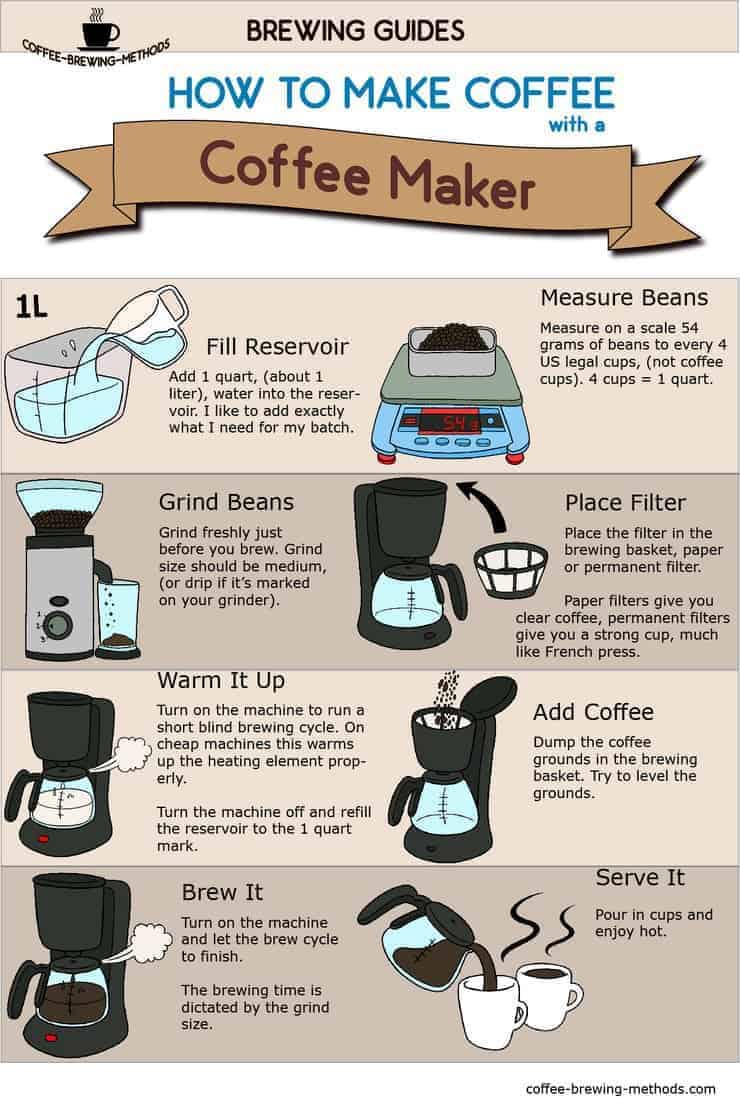
Credit: coffee-infographics.com
Frequently Asked Questions
What Is Drip Coffee?
Drip coffee is brewed by hot water passing through coffee grounds. This method uses a drip coffee maker. It produces a clean and robust flavor.
How To Grind Coffee For Drip Coffee?
Use a medium-coarse grind for drip coffee. This ensures optimal extraction. Too fine or too coarse can affect flavor.
What Ratio Of Coffee To Water For Drip Coffee?
Use a 1:16 coffee-to-water ratio. For example, 1 gram of coffee to 16 grams of water. Adjust to taste.
How Long To Brew Drip Coffee?
Drip coffee typically brews in 5 to 10 minutes. Time varies based on machine and coffee amount. Check manufacturer’s instructions.
Conclusion
Brewing drip coffee can be simple and rewarding. Follow the steps carefully. Use fresh beans and clean equipment for the best flavor. Enjoy experimenting with different coffee grounds. Adjust water temperature and brewing time to suit your taste. Practice makes perfect.
Soon, you will enjoy a rich, aromatic cup. A great way to start your day. Happy brewing!
